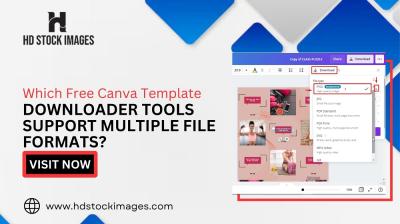Introduction
Welcome to our comprehensive guide on how to use Imago Images to obtain high-converting images for your website. In today's digital landscape, visuals play a pivotal role in capturing the attention of your audience and driving engagement. Whether you're running a blog, e-commerce site, or any other online platform, the quality of your images can make or break your success.
Imago Images is a valuable resource that provides access to a vast library of stunning images, illustrations, and photographs. In this blog post, we'll walk you through the process of effectively utilizing Imago Images to enhance your website's visual appeal and, ultimately, boost conversions.
We'll cover everything from the importance of high-converting images to navigating the Imago Images platform, understanding licensing options, optimizing images, and maximizing user engagement. By the end of this guide, you'll have the knowledge and tools to elevate your website's image game and create a memorable online presence.
Also Read This: What Should I Shoot for Shutterstock? Tips for Capturing Marketable Images
Why High-Converting Images Matter

Images are the visual storytellers of your website. They have the power to captivate your audience, convey emotions, and influence user behavior. Here's why high-converting images matter for your website's success:
- First Impressions: When visitors land on your website, they form an instant impression. High-quality images create a positive first impression, signaling professionalism and trustworthiness.
- User Engagement: Engaging images keep visitors on your site longer, reducing bounce rates. Users are more likely to explore your content when visuals pique their interest.
- Brand Identity: Images can reinforce your brand identity. Consistent use of images that align with your brand's values and messaging helps build brand recognition.
- Conversions: High-converting images can lead directly to increased conversions. Whether you're selling products or services, compelling visuals can drive users to take desired actions, such as making a purchase or signing up.
- Emotional Connection: Images have the unique ability to evoke emotions. They can make users feel happy, inspired, or even empathetic, which can strengthen their connection to your website.
It's not just about using any images; it's about using the right ones that resonate with your target audience and align with your website's goals. When you choose images that are relevant, appealing, and properly optimized, you're more likely to see positive results.
The Impact of Image Quality
Image quality is a critical factor in determining how effective an image is at achieving its intended purpose. Poor-quality, pixelated, or distorted images can have the opposite effect, driving users away from your site. To ensure high-converting images:
| Resolution: | Use images with a high resolution to ensure clarity and sharpness. Avoid stretching or enlarging low-resolution images, as it can lead to a loss of quality. |
| Compression: | Compress images to reduce file sizes without compromising quality. Smaller file sizes help improve website loading speed. |
| Relevance: | Select images that directly relate to your content and message. Irrelevant visuals can confuse and deter users. |
In conclusion, high-converting images are not just nice-to-have; they are essential for creating a compelling online presence and achieving your website's objectives. They engage users, reinforce your brand, and drive conversions. In the next sections, we'll explore how to harness the power of Imago Images to find the perfect visuals for your website.
Also Read This: Imago Images vs Getty Images Finding the Right Platform for Your Needs
Getting Started with Imago Images
Now that you understand the importance of high-converting images, it's time to explore how to get started with Imago Images. This section will guide you through the initial steps of accessing and navigating the platform to find the perfect visuals for your website.
1. Create an Account
The first step is to create an account on Imago Images. You can sign up for a free account or explore premium options, depending on your image needs. A registered account allows you to save your favorite images, track your downloads, and access advanced features.
2. Explore the Image Library
Imago Images boasts a vast library of high-quality images, illustrations, and photographs. Use the search bar to enter keywords related to the type of images you need. Imago Images offers powerful search filters, allowing you to narrow down results by category, color, orientation, and more.
3. Preview and Select Images
Once you find images that match your criteria, click on them to view high-resolution previews. It's essential to examine the images closely to ensure they align with your website's content and message. Look for images that resonate with your target audience.
4. Licensing Options
Imago Images offers various licensing options, including royalty-free and rights-managed licenses. Make sure to review the licensing terms associated with each image. Depending on your website's purpose, you may need different licensing rights. Be mindful of usage restrictions.
5. Download and Optimize
After selecting the perfect images, you can download them to your computer. Imago Images typically provides images in high-resolution formats. Once downloaded, you may need to optimize them for web use. This includes resizing, compressing, and adjusting image settings for faster loading times.
6. Attribution and Credits
If you're using images with specific attribution requirements, make sure to give proper credit to the image creators. This is not only ethical but also ensures compliance with licensing agreements.
7. Integration with Your Website
Finally, integrate the downloaded and optimized images seamlessly into your website's design and content. Pay attention to image placement, alt text for accessibility, and overall visual cohesion with your site's branding.
| TIP: | Consider creating a style guide for your website's images to maintain consistency in image selection, size, and usage across your webpages. |
Getting started with Imago Images is a straightforward process that opens up a world of visual possibilities for your website. In the next sections, we'll delve deeper into strategies for searching, selecting, and optimizing images to enhance user engagement and boost conversions.
Also Read This: Why News Agencies Consistently Trust Imago Images for Accurate and Reliable Visuals
Searching for High-Quality Images
Effective image selection starts with the ability to find high-quality images that resonate with your website's content and message. Imago Images offers robust search capabilities to help you discover the perfect visuals. Here's how to search for high-quality images:
1. Use Specific Keywords
Be precise: Start your search with specific keywords related to the image you need. For example, if you're running a travel blog, use keywords like "beach sunset" or "city skyline at night" to narrow down results.
2. Apply Filters
Imago Images provides filters that allow you to refine your search results. These filters include:
- Category: Filter images by categories such as nature, technology, or lifestyle.
- Color: Select specific colors that match your website's palette.
- Orientation: Choose between landscape and portrait images based on your layout needs.
- Size: Specify image dimensions to ensure they fit seamlessly into your design.
- License: Filter images based on licensing options, such as royalty-free or rights-managed.
3. Sort by Relevance
Imago Images typically provides search results sorted by relevance. This helps you discover images that are most likely to align with your search intent. However, you can also explore alternate sorting options, such as sorting by date or popularity, depending on your preferences.
4. Preview Image Details
Before selecting an image, click on it to view detailed information. This includes image resolution, licensing details, and related keywords. Pay attention to licensing terms to ensure they match your website's usage needs.
5. Save Favorites
Imago Images allows you to create collections or save images to your favorites. This feature is handy for curating a selection of images that you're considering for your website. It simplifies the process of reviewing and making final selections.
6. Seek Inspiration
If you're unsure about the specific images you need, consider browsing Imago Images for inspiration. Exploring different categories and styles can help you identify visuals that align with your website's tone and message.
| TIP: | Regularly update your website's visuals to keep your content fresh and engaging. Stale or outdated images can deter visitors. |
Searching for high-quality images on Imago Images is an art that involves precise keyword usage, effective filtering, and attention to licensing details. In the next section, we'll delve into licensing options and how to choose the right one for your website.
Also Read This: How Imago Images Is Revolutionizing Stock Photography
Understanding Licensing and Usage Rights
When using images from Imago Images on your website, it's crucial to have a clear understanding of licensing and usage rights. Different images may come with different terms and conditions, and compliance is essential to avoid legal issues. Here's a breakdown of the key aspects to consider:
1. Royalty-Free Licenses
Royalty-free images: These images come with a one-time purchase fee, and you can typically use them for multiple projects without additional costs. However, the specific terms can vary, so always check the licensing details provided for each image.
2. Rights-Managed Licenses
Rights-managed images: These images are licensed for specific uses, and the price depends on factors such as image size, usage duration, and exclusivity. Ensure that you understand and adhere to the usage restrictions associated with rights-managed images.
3. Editorial vs. Commercial Use
Editorial use: Some images on Imago Images are intended for editorial purposes only, such as news articles and non-commercial blogs. Make sure you don't use editorial images for commercial purposes without proper clearance.
Commercial use: If you plan to use images for business-related activities, such as marketing or advertising, ensure you have the appropriate commercial licenses.
4. Attribution and Credits
Some images may require you to provide attribution to the photographer or source as per the licensing terms. Always check if attribution is necessary and follow the specified guidelines when giving credit.
5. Exclusive vs. Non-Exclusive
Exclusive images: These are images that are available for use by a single buyer only. If you want exclusive rights to an image, you may need to pay a premium. Non-exclusive images can be used by multiple buyers.
6. Duration of Usage
Be aware of the duration for which you can use an image. Some licenses may have time restrictions, after which you may need to renew your license or cease using the image.
7. Model and Property Releases
If an image features identifiable individuals or private property, it's essential to check whether the necessary model and property releases are in place. Using such images without releases can lead to legal complications.
| NOTE: | Always read and understand the licensing terms and conditions provided by Imago Images for each image you plan to use. Compliance is vital to avoid legal issues. |
By grasping the intricacies of licensing and usage rights, you can confidently select and use images from Imago Images that align with your website's goals and stay within the boundaries of copyright laws. In the next section, we'll delve into the process of optimizing images for seamless integration into your website.
Also Read This: Distorting an Image: Techniques and Tips
Optimizing Images for Your Website
Optimizing images is a critical step to ensure they enhance your website's performance, user experience, and search engine visibility. Large, unoptimized images can slow down your site and frustrate visitors. Here's a comprehensive guide on how to optimize images for your website:
1. Choose the Right Image Format
Select the optimal format: Common image formats include JPEG, PNG, and GIF. Choose the format that best suits your image type. JPEG is great for photographs, while PNG is ideal for images with transparency.
2. Resize Images Appropriately
Size matters: Scale images to the exact dimensions needed on your website. Avoid using large images and relying on HTML/CSS to resize them, as this can affect loading times.
3. Compress Images for Web
Reduce file size: Use image compression tools to reduce the file size without sacrificing quality. This significantly improves page load speed, which is crucial for user experience and SEO.
4. Utilize Image Alt Text
Enhance accessibility: Add descriptive alt text to your images. Alt text serves as a textual description of the image and is essential for visually impaired users and SEO. Use keywords when relevant but avoid keyword stuffing.
5. Implement Lazy Loading
Lazy loading: Enable lazy loading for your images, which loads images as users scroll down the page. This conserves bandwidth and ensures a faster initial page load.
6. Consider Responsive Images
Responsive design: Implement responsive images that adapt to different screen sizes and devices. This ensures a consistent user experience across various platforms.
7. Enable Browser Caching
Browser caching: Leverage browser caching to store images locally on users' devices. This reduces the need to re-download images on subsequent visits, improving load times.
8. Optimize Image File Names
Descriptive names: Use descriptive and keyword-rich file names for your images. Avoid generic names like "image001.jpg." Instead, opt for names like "beach-sunset.jpg" to enhance SEO.
| TIP: | Regularly audit your website for image optimization and performance improvements. Tools like Google PageSpeed Insights can help identify areas for enhancement. |
Optimizing images for your website is not just about aesthetics; it's about delivering a seamless user experience and improving your website's SEO. Properly optimized images contribute to faster loading times, which can positively impact your site's rankings on search engines. In the next section, we'll explore strategies for enhancing user engagement with Imago Images.
Also Read This: How Much Can I Make on Shutterstock? Understanding Potential Earnings as a Contributor
Enhancing User Engagement with Imago Images
Imago Images is not just a source of visuals; it's a tool to boost user engagement on your website. Here are strategies to effectively leverage Imago Images for enhanced user engagement:
1. Visual Storytelling
Create a narrative: Use images to tell a story or convey a message. For example, if you're a travel blogger, use images to illustrate your journeys and experiences. This captivates your audience and keeps them engaged.
2. Emotion Elicitation
Evoke emotions: Images have the power to evoke emotions in your audience. Choose visuals that resonate with the mood and tone of your content. Happy, inspiring, or thought-provoking images can enhance user engagement.
3. Consistent Branding
Brand consistency: Maintain a consistent visual style by selecting images that align with your brand's color palette and message. Consistency reinforces your brand identity and helps users recognize your content instantly.
4. Use Imagery in Calls to Action (CTAs)
CTA enhancement: Incorporate images into your calls to action. Whether it's a "Buy Now" button or a "Learn More" link, visuals can make CTAs more compelling and encourage user interaction.
5. Interactive Images
Interactivity: Consider using interactive images that allow users to engage with your content. For example, you can include image sliders, galleries, or clickable hotspots to provide additional information.
6. Image Galleries and Slideshows
Engaging galleries: Create image galleries or slideshows to showcase a series of images. This keeps users engaged as they explore your content visually.
7. Feature User-Generated Content
User involvement: Encourage user-generated content that incorporates images. User-submitted photos or testimonials with visuals can boost trust and community engagement.
8. A/B Testing
Experimentation: Conduct A/B tests with different images to determine which ones resonate best with your audience. Use data-driven insights to refine your image selection strategy.
| TIP: | Always ensure that images are relevant to your content. Irrelevant or misleading visuals can deter users and harm your website's credibility. |
By implementing these strategies, you can transform Imago Images into a powerful tool for enhancing user engagement on your website. Remember that the right images can convey messages, emotions, and stories that resonate with your audience, leading to increased interaction and conversion rates. In the following section, we'll address common questions about using Imago Images effectively.
Untitled by Alter Imago pic.twitter.com/K475xcotA3
— Eyes of God (@Eyesofgod__) October 14, 2023
Also Read This: How to Find the Perfect Stock Photos on Imago Images for Any Project
FAQs
Here are some frequently asked questions about using Imago Images effectively to enhance your website's visuals:
- What is Imago Images?
- Do I need an account to use Imago Images?
- What types of licenses are available on Imago Images?
- How can I search for images on Imago Images?
- What are editorial and commercial use images?
- What is the importance of image optimization?
- How can I optimize images downloaded from Imago Images?
- What role do images play in user engagement?
Imago Images is a platform that provides access to a vast library of high-quality images, illustrations, and photographs for various purposes, including website design, marketing, and content creation.
While you can browse Imago Images without an account, creating one offers benefits such as saving favorite images, tracking downloads, and accessing advanced features. Registration is free.
Imago Images offers both royalty-free and rights-managed licenses. Royalty-free images typically come with a one-time purchase fee and allow multiple uses, while rights-managed images have specific usage terms and pricing.
Use the search bar and enter keywords related to the images you need. You can also apply filters to narrow down results by category, color, orientation, size, and license type.
Editorial use images are intended for non-commercial purposes, such as news articles and blogs. Commercial use images can be used for business-related activities, such as marketing and advertising.
Image optimization ensures that your images are appropriately sized, compressed, and formatted for the web. This improves website loading times, user experience, and SEO rankings.
You can optimize images by resizing them to the required dimensions, compressing them to reduce file size, adding descriptive alt text, and enabling lazy loading for better performance.
Images enhance user engagement by conveying messages, evoking emotions, and creating a visually appealing experience. They can also improve conversion rates when used effectively in calls to action.
These FAQs provide answers to common queries about using Imago Images to elevate your website's visual content. If you have more questions or need specific guidance, don't hesitate to explore Imago Images' support resources or contact their customer service.
Conclusion
In conclusion, harnessing the power of Imago Images can significantly elevate the visual appeal and user engagement of your website. Images are not mere decorations; they are a vital component of effective storytelling, emotion evocation, and brand identity reinforcement.
We've explored various aspects of using Imago Images effectively:
- Getting Started: We learned how to access and navigate Imago Images, ensuring that you can seamlessly integrate its resources into your web development and content creation processes.
- Searching for High-Quality Images: Effective image searching techniques were discussed, enabling you to find the perfect visuals that align with your website's message and audience.
- Understanding Licensing and Usage Rights: We delved into the intricacies of licensing, ensuring that you can confidently select images while complying with legal and ethical standards.
- Optimizing Images for Your Website: The importance of image optimization for performance and user experience was emphasized, along with practical steps for achieving it.
- Enhancing User Engagement: Strategies to captivate your audience and boost interaction using Imago Images were provided, helping you create a visually engaging website.
- FAQs: Common questions about using Imago Images were addressed to provide clarity and guidance.
Remember that visuals are a powerful communication tool. The images you choose can influence how users perceive your website and content. Whether you're running a blog, an e-commerce site, or any other online platform, Imago Images offers a treasure trove of resources to help you convey your message effectively and engage your audience.
As you continue to explore the world of web design and content creation, consider Imago Images as your reliable partner in crafting a visually stunning and compelling online presence.
 admin
admin








